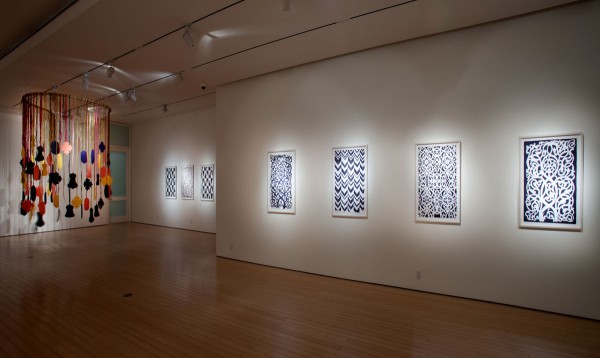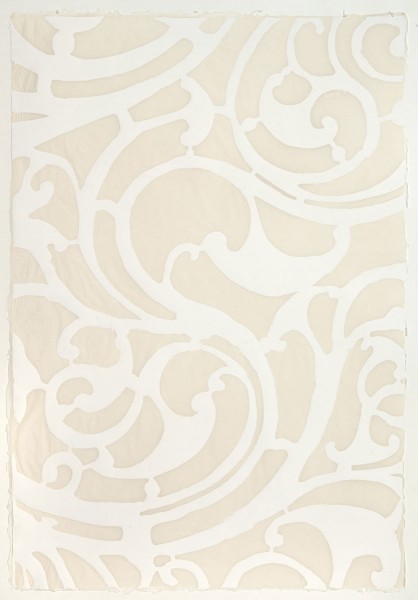A dynamic interplay of simplicity and complexity delights the viewer’s eye in Teresa Cole’s latest body of work, Mantras of Form and Pattern. In an immersive installation of handmade paper and a suite of abstract compositions, this widely exhibited artist-a professor and chair of the art department at Tulane University-mines her explorations of Indian art and philosophy, illuminating just how intertwined these disciplines are. The works were inspired by Cole’s visits to India and by paintings collected in French poet Franck André Jamme’s groundbreaking book, Tantra Song. Those paintings, Cole remarks, “are so unbelievably beautiful and simple-the author, Jamme, describes them as ‘almost everything and almost nothing.'” Her own works are informed by a similar dialogue between form and absence, a dialectic heightened by the physicality of her process. The papers’ edges are feathery and deckled; colors bleed through with sensual organicism; and the sandwiching of linen and abaca fibers creates passages of alternating opacity and translucence.
Cole’s works are prized in important private, corporate, and institutional collections around the world. The current pieces stem from a grant, awarded by the Office of Academic Affairs at Tulane University, she received this summer to work with master paper-maker Lisa Switalski at Dieu Donné studio in New York City. Utilizing stencils that depict a treasure trove of patterns culled from her research in India, she evolved a vision in which subject matter and technique, ornamentation and structure, became one and the same. In this exhibition at Callan Contemporary, she complements wall-based works with an installation comprised of nearly 100 shaped pieces of handmade paper, divided among six symmetrical forms and hues of pink, indigo, saffron, and black. Hung from strips of Indian saris, the forms appear to float beneath a wooden armature. Viewers walk around the installation’s curves and reach an enveloping, curtain-like center, a space for reflection and contemplation.
Throughout the exhibition, pigment and paper pulp coalesce into sculptural wholes, yielding subtle variations in texture, pattern, and color. “I view them as meditations, repetitions, and mantras,” Cole says. “I’m hoping the viewer can stand in front of them and become mesmerized by the complexity of some, the simplicity of others, or by both of those aspects in the same piece.”
—Richard Spear 2012
A Center on Research grant from the Office of Academic Affairs, Tulane University made the work in this exhibition possible.




















